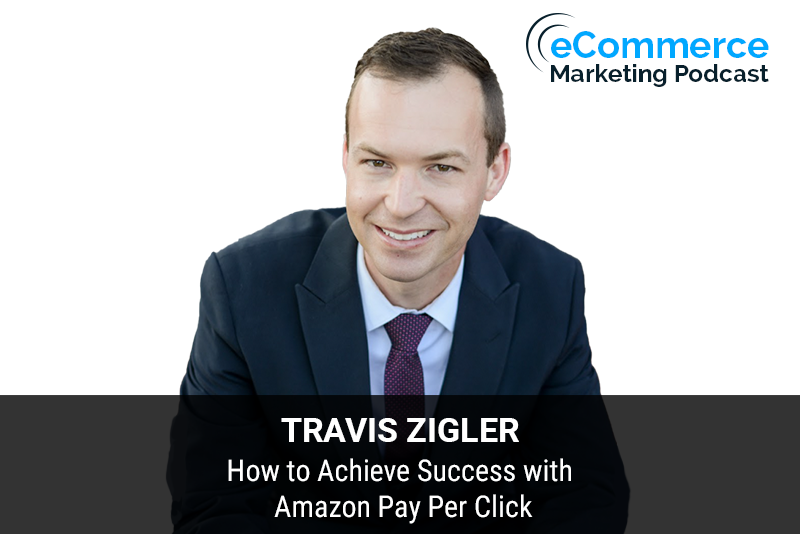
eCommerce Marketing Podcast
The eCommerce Marketing Podcast walks you through everything that goes into ecommerce marketing — from inbound marketing to paid advertising to conversions. Learn the strategies top marketing experts use to grow their businesses.
How to Achieve Success with Amazon Pay Per Click – with Travis Zigler
byArlen Robinson
Marketing Strategies and Topics Covered in this Episode:
- What is Amazon Pay-Per-Click
- The different Amazon pay per click ad types and which ones are right for you
- How to increase visibility and sales
- Examples of businesses that have been successful with their Amazon Pay-Per-Click

In this episode of the eCommerce Marketing Podcast, host Arlen Robinson interviews Dr. Travis Zigler, an e-commerce entrepreneur specializing in Amazon Pay-Per-Click (PPC) advertising. Dr. Zigler, a former optometrist, shares his journey from optometry to founding Eye Love and the Profitable Pineapple Ads Agency. He discusses the ins and outs of Amazon PPC, strategies for maximizing ad visibility, and the success of his ventures in e-commerce.
Key Takeaways:
- Introduction to Dr. Travis Zigler (00:01:39)
- Dr. Travis Zigler’s background as an optometrist turned e-commerce entrepreneur.
- Founding Eye Love and its mission to help dry eye sufferers.
- Creation of Profitable Pineapple Ads Agency to help other businesses grow on Amazon.
- Amazon’s Dominance in E-commerce (00:02:43)
- Amazon accounts for 50% of online sales, making it an essential platform for sellers.
- Getting Started with Amazon PPC (00:06:09)
- Overview of Amazon PPC and its importance in search queries on a buying platform.
- Differences between Amazon PPC and other platforms like Google and Facebook.
- Types of Amazon PPC Ads (00:10:28)
- Sponsored Products: Basic search ads targeting specific keywords.
- Sponsored Brands: Banner ads for brand awareness.
- Sponsored Display: Display ads shown on Amazon and affiliate sites, including retargeting.
- Effective PPC Strategies (00:17:56)
- Increase bids to improve ad visibility.
- Utilize product targeting ads to appear on competitor pages.
- Retarget previous customers to increase repeat purchases.
- Case Studies and Successful Brands (00:23:10)
- Examples of successful brands using Amazon PPC: Eye Love, Levi’s, Starbucks, Zhou Nutrition.
- Importance of Amazon as a launch platform for expanding into other retail channels.
Bullet Points of Key Takeaways with Timestamps:
- [00:01:39] Introduction to Dr. Travis Zigler and his background.
- [00:02:43] Amazon’s dominance in e-commerce: 50% of online sales.
- [00:06:09] Overview of Amazon PPC and its importance.
- [00:10:28] Types of Amazon PPC ads: Sponsored Products, Sponsored Brands, Sponsored Display.
- [00:17:56] Strategies for increasing ad visibility: increasing bids, product targeting ads, retargeting.
- [00:23:10] Examples of successful brands: Eye Love, Levi’s, Starbucks, Zhou Nutrition.
Guest Information:
Dr. Travis Zigler
- CEO of Profitable Pineapple Ads Agency
- Connect on Facebook: Amazon PPC Pros
- YouTube Channel: Amazon PPC Pros by Profitable Pineapple
- Website: Profitable Pineapple











